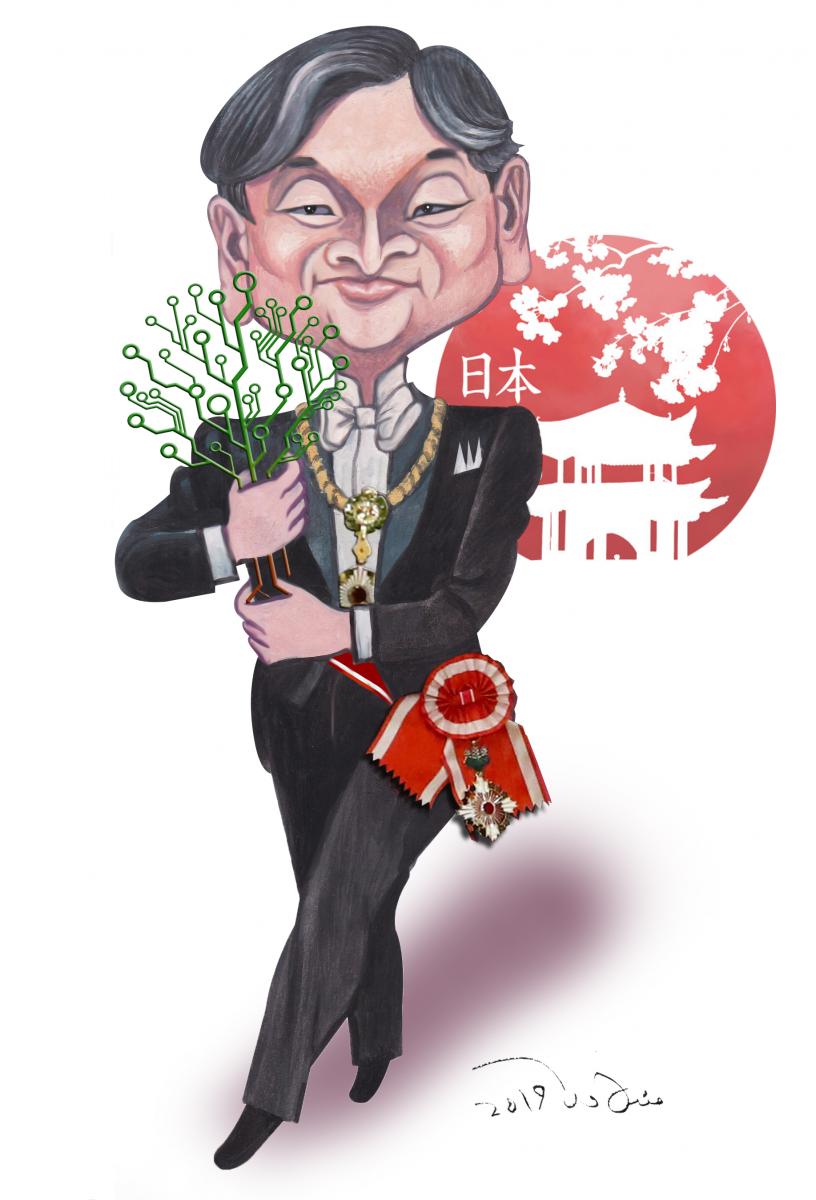
A Non-Traditional Royal Background
Emperor Naruhito was born on February 23, 1960, in the Imperial Household Agency Hospital at Tokyo Imperial Palace. As the eldest son of crown prince Akihito, he became third in line for succession since his grandfather Hirohito was still emperor at the time. When his father, Akihito, was crowned as emperor in 1989, the 28-year-old Naruhito became Japan’s crown prince. His parents, Emperor Akihito and Empress Michiko, were breakers of tradition. First and foremost, Michiko was a commoner and a Catholic and many traditionalists opposed the prospect of their marriage. However, love won the day as Akihito became the first Japanese crown prince to marry a commoner. As the royal couple, they also performed unprecedented acts such as visiting natural disaster victims in plainclothes and kneeling before them.
Breaking Traditions Runs in the Family
As crown prince, Naruhito would follow his parents’ example and break some traditions of his own. In 1978, the 18-year-old Naruhito enrolled at Gakushūin University, and four years later he would become the first Japanese crown prince to earn a university degree. That wouldn’t the last of his academic pursuits, as he started his postgraduate studies at Gakushūin University’s Graduate School of Humanities just one month after earning his bachelor’s degree. His studies focused on history with a specialization in medieval transport and distribution, he earned his master’s degree in 1988. During his postgraduate years, he also went to study at Merton College, Oxford in Britain from 1983 to 1985. The Oxford University Press would publish one of his academic studies in April 1989 entitled: The Thames as Highway: A study of Navigation and Traffic on the Upper Thames in the Eighteenth Century. Oxford University would give him an honorary degree in Law in 1991. In spite of his royal duties, he continued his academic career by becoming a guest researcher in the archives of Gakushūin University in 1992. He also gave a series of lectures on British society and traditions at that same institution.
Like Father, Like Son
One day in 1986, Naruhito was attending a tea reception held for Duchess Infanta Elena (daughter of former Spanish King Juan Carlos I). During the reception, he met Masako Owada who was working in the Japanese diplomatic sector. Naruhito was instantly captivated by her and like his father; he would fall in love with a commoner. However, Naruhito would take it a step further since his father was in love with, Michiko, a commoner with an upper-class background, while Masako wasn’t as fortunate. The enamored emperor to be soon pursued Masako, who was reportedly reluctant towards Naruhito’s advancements. Nevertheless, Naruhito’s love bug soon made its way to Masako’s heart and they got married 1993. When the crown prince proposed he made an important promise to Masako; he would always protect her. In 2003, he proved word's worth when Masako came down with a stress-induced adjustment disorder and in spite of this, he remained by his wife’s side and supported her throughout her time of grave trials. Together the couple has one daughter, Princess Aiko, who was born on December 1, 2001. Before his ascension, the family lived Tōgū Palace in Tokyo, the official residence of the Crown Prince and Crown Princess.
Parliament Follows the Royal Family’s Example
Ever since his coronation in 1989, Emperor Akihito has dedicated his life to serving the people of Japan and being a representative of the Japanese nation. He will forever be remembered for his acts of empathy, particularly towards those who suffered from the 1991 Nagasaki volcanic eruption and the 2011 Fukushima earthquake, respectively. However, his declining health meant that he couldn’t perform his royal duties with the same vigor as before and as a result, he foreshadowed his intention to abdicate the throne in the late 2010s something that hasn’t happened since 1817. However, the current royal family has shown time and again that it is willing to break from traditions, and in 2017, Japan’s National Diet (its legislature) followed the family’s example by issuing a bill that would allow the emperor to give up his throne for his eldest son, Crown Prince Naruhito. Akihito would formally abdicate on April 30, 2019, and soon after his scholar son became the new Emperor of Japan, while Masako became the new Empress of Japan.
Will More Traditions Be Broken?
Since Naruhito has no son, his younger brother Fumihito, Prince Akishino has become the new crown prince of Japan. However, Emperor Naruhito might break another tradition and allow for a change in the succession law to pave the way for his daughter, Aiko, to succeed him. Such a change would likely need approval from the National Diet, which could also opt to change the law which requires female royal family members to lose their royal status if they chose to marry a commoner. If such changes happen, then Aiko would become Japan’s first empress regnant since Empress Go-Sakuramachi whose reign ended in 1771.







